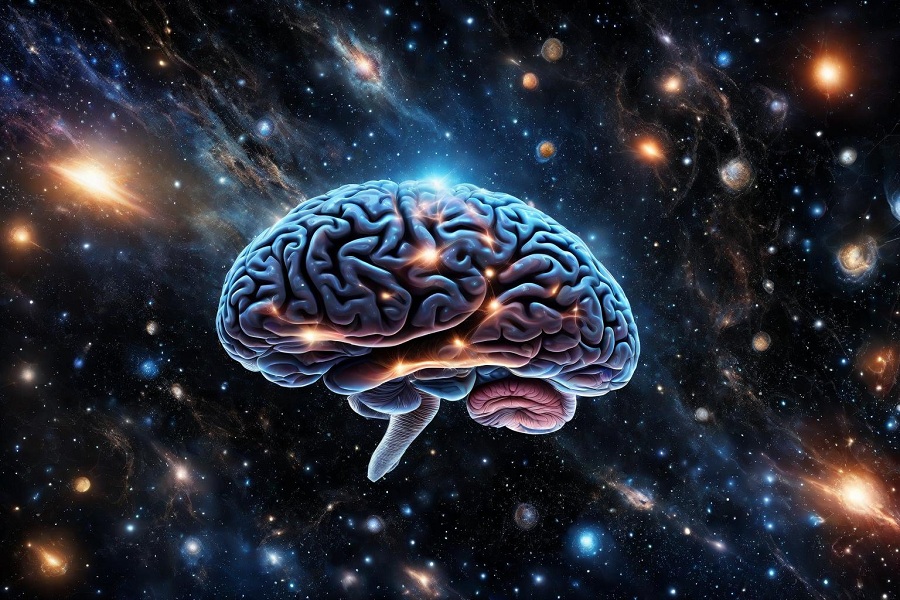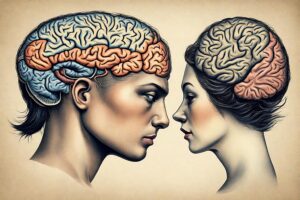There are 86 billion neurons in your brain, roughly the same number as there are galaxies in the observable universe
The human brain, with its 86 billion neurons, represents one of the pinnacle achievements of evolution. Its complexity has fascinated scientists, philosophers, and thinkers for centuries, often leading to the assertion that it is the most complex object in the known universe. This notion was notably championed by neuroscientist Christof Koch in his 2012 book “Consciousness: Confessions of a Romantic Reductionist.” However, the validity of this claim is a subject of active debate within the scientific community.
The Marvel of the Human Brain: Neurons and Their Connections
The human brain, often lauded for its complexity, is a marvel of biological engineering. Its intricate network consists of approximately 86 billion neurons, each playing a pivotal role in processing information and orchestrating the symphony of thoughts, emotions, and actions that define the human experience. Understanding how these neurons are connected and how they communicate is key to appreciating the brain’s complexity.
Neurons and Their Networks
- The Building Blocks: Neurons are the fundamental units of the brain and nervous system. They are specialized cells designed to transmit information to other nerve cells, muscle, or gland cells. The structure of a neuron facilitates its role in communication, with dendrites receiving signals, a cell body integrating the information, and an axon sending the signal out.
- An Intricate Web: The connections between neurons, known as synapses, form an intricate web that allows for the rapid and efficient transfer of information. It’s estimated that each neuron forms about 1,000 to 10,000 synapses with other neurons, illustrating the dense network of communication pathways within the brain.
Electrical Signals: The Language of Neurons
- Transmission of Information: Neurons communicate through electrical signals known as action potentials. These are rapid rises and falls in the electrical charge of a neuron’s membrane, triggered when a neuron receives enough signaling molecules from other neurons at its synapses.
- The Synaptic Gap: Despite the close connections, neurons do not physically touch each other at their synapses. Instead, there is a small gap known as the synaptic cleft. When an action potential reaches the end of a neuron’s axon, it causes the release of neurotransmitters, which cross the synaptic gap and bind to receptors on the next neuron. This binding changes the electrical charge of the receiving neuron, potentially generating a new action potential and continuing the chain of communication.
- A Symphony of Signals: This intricate process of electrical and chemical signals allows for the complex phenomena of thought, emotion, and consciousness. The speed and efficiency of these signals enable humans to react to the environment, make decisions, and remember vast amounts of information.
The human brain, with its billions of neurons and trillions of connections, stands as a testament to the complexity and sophistication of life. Understanding the intricate dance of electrical signals across this network gives us a glimpse into the machinery behind human thought, memory, and identity.
The Debate on Complexity
David Wolpert of the Santa Fe Institute, a hub for complexity science, challenges the very framework of comparing the brain’s complexity to that of the universe. “It’s almost farcical to entertain that we are the most complex system in the universe,” he argues, pointing out that such comparisons might be fundamentally flawed. Despite the skepticism, the question persists: Is there a universal measure of complexity that applies across different systems?
What Defines Complexity?
- Emergence Over Components: Complexity isn’t merely about the number of components or how they are interconnected. It’s about emergence—the property wherein the whole is greater than the sum of its parts. Ricard Solé draws a comparison between the brain and ant colonies, emphasizing how simple units together produce sophisticated behaviors.
- Unique Human Attributes: Solé also highlights how human brains have transcended their neuronal components due to our unique capacity for language, memory, and imagination. These attributes allow us to envision and discuss infinite possibilities and understand the minds of others.
Measuring Complexity
Seth Lloyd of MIT proposed three fundamental questions to evaluate the complexity of an object: How hard is it to describe? How hard is it to create? What is its degree of organization? From these questions, numerous measures of complexity have emerged, each offering a different lens through which to view intricate systems.
- Assembly Theory and Integrated Information Theory (IIT): These theories offer insights into the brain’s complexity. Assembly theory evaluates the evolutionary complexity of an object based on the steps required to build it and its capacity to generate further complexity. IIT, on the other hand, quantifies the level of consciousness in a system by assessing the density of its interconnections. By these metrics, the human brain ranks highly in complexity.
However, not all complexity theorists agree with these measures, and there is no consensus on a universal definition of complexity. Wolpert emphasizes that the strength of complexity science lies not in finding a singular measure, but in the diversity of perspectives it encompasses.
The Verdict on Human Brain Complexity
David Wolpert is unequivocal in his assessment: claiming the human brain as the most complex object in the universe is sheer hubris. He asserts that nothing concerning humans is fundamentally privileged, including our brains. At best, our brains are considered “run of the mill” in the cosmic scheme of things.
Conclusion: A Humble Perspective
The ongoing debate on the complexity of the human brain versus the cosmos highlights the limitless curiosity and pursuit of understanding that mark humanity. While it’s tempting to crown the human brain as the universe’s most complex object, such a title may oversimplify the grand tapestry of existence. The universe is filled with mysteries and wonders, many of which we have yet to discover or understand fully. Perhaps the most important lesson is to approach these questions with humility, acknowledging the vastness of the unknown and the boundless potential for discovery.



